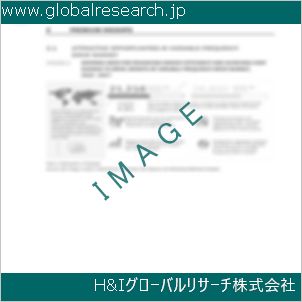Table of Contents
1 Industry Overview of Pimelic acid
1.1 Definition and Specifications of Pimelic acid
1.1.1 Definition of Pimelic acid
1.1.2 Specifications of Pimelic acid
1.2 Classification of Pimelic acid
1.3 Applications of Pimelic acid
1.3.1 Nuclear Application
1.3.2 Non-Nuclear Application
1.4 Industry Chain Structure of Pimelic acid
1.5 Industry Overview and Major Regions Status of Pimelic acid
1.5.1 Industry Overview of Pimelic acid
1.5.2 Global Major Regions Status of Pimelic acid
1.6 Industry Policy Analysis of Pimelic acid
1.7 Industry News Analysis of Pimelic acid
2 Manufacturing Cost Structure Analysis of Pimelic acid
2.1 Raw Material Suppliers and Price Analysis of Pimelic acid
2.2 Equipment Suppliers and Price Analysis of Pimelic acid
2.3 Labor Cost Analysis of Pimelic acid
2.4 Other Costs Analysis of Pimelic acid
2.5 Manufacturing Cost Structure Analysis of Pimelic acid
2.6 Manufacturing Process Analysis of Pimelic acid
3 Technical Data and Manufacturing Plants Analysis of Pimelic acid
3.1 Capacity and Commercial Production Date of Global Pimelic acid Major Manufacturers in 2023
3.2 Manufacturing Plants Distribution of Global Pimelic acid Major Manufacturers in 2023
3.3 R&D Status and Technology Source of Global Pimelic acid Major Manufacturers in 2023
3.4 Raw Materials Sources Analysis of Global Pimelic acid Major Manufacturers in 2023
4 Capacity, Production and Revenue Analysis of Pimelic acid by Regions, Types and Manufacturers
4.1 Global Capacity, Production and Revenue of Pimelic acid by Regions 2019-2024
4.2 Global and Major Regions Capacity, Production, Revenue and Growth Rate of Pimelic acid 2019-2024
4.3 Global Capacity, Production and Revenue of Pimelic acid by Types 2019-2024
4.4 Global Capacity, Production and Revenue of Pimelic acid by Manufacturers 2019-2024
5 Price, Cost, Gross and Gross Margin Analysis of Pimelic acid by Regions, Types and Manufacturers
5.1 Price, Cost, Gross and Gross Margin Analysis of Pimelic acid by Regions 2019-2024
5.2 Price, Cost, Gross and Gross Margin Analysis of Pimelic acid by Types 2019-2024
5.3 Price, Cost, Gross and Gross Margin Analysis of Pimelic acid by Manufacturers 2019-2024
6 Consumption Volume, Consumption Value and Sale Price Analysis of Pimelic acid by Regions, Types and Applications
6.1 Global Consumption Volume and Consumption Value of Pimelic acid by Regions 2019-2024
6.2 Global and Major Regions Consumption Volume, Consumption Value and Growth Rate of Pimelic acid 2019-2024
6.3 Global Consumption Volume and Consumption Value of Pimelic acid by Types 2019-2024
6.4 Global Consumption Volume and Consumption Value of Pimelic acid by Applications 2019-2024
6.5 Sale Price of Pimelic acid by Regions 2019-2024
6.6 Sale Price of Pimelic acid by Types 2019-2024
6.7 Sale Price of Pimelic acid by Applications 2019-2024
6.8 Market Share Analysis of Pimelic acid by Different Sale Price Levels
7 Supply, Import, Export and Consumption Analysis of Pimelic acid
7.1 Supply, Consumption and Gap of Pimelic acid 2019-2024
7.2 Global Capacity, Production, Price, Cost, Revenue, Supply, Import, Export and Consumption of Pimelic acid 2019-2024
7.3 USA Capacity, Production, Price, Cost, Revenue, Supply, Import, Export and Consumption of Pimelic acid 2019-2024
7.4 EU Capacity, Production, Price, Cost, Revenue, Supply, Import, Export and Consumption of Pimelic acid 2019-2024
7.5 China Capacity, Production, Price, Cost, Revenue, Supply, Import, Export and Consumption of Pimelic acid 2019-2024
7.6 Japan Capacity, Production, Price, Cost, Revenue, Supply, Import, Export and Consumption of Pimelic acid 2019-2024
8 Major Manufacturers Analysis of Pimelic acid
8.1 Manufacturer One
8.1.1 Company Profile
8.1.2 Product Picture and Specifications
8.1.2.1 Type I
8.1.2.2 Type II
8.1.2.3 Type III
8.1.3 Capacity, Production, Price, Cost, Gross and Revenue
8.1.4 Contact Information
8.2 Manufacturer Two
8.2.1 Company Profile
8.2.2 Product Picture and Specifications
8.2.2.1 Type I
8.2.2.2 Type II
8.2.2.3 Type III
8.2.3 Capacity, Production, Price, Cost, Gross and Revenue
8.2.4 Contact Information
8.3 Manufacturer Three
8.3.1 Company Profile
8.3.2 Product Picture and Specifications
8.3.2.1 Type I
8.3.2.2 Type II
8.3.2.3 Type III
8.3.3 Capacity, Production, Price, Cost, Gross and Revenue
8.3.4 Contact Information
8.4 Manufacturer Four
8.4.1 Company Profile
8.4.2 Product Picture and Specifications
8.4.2.1 Type I
8.4.2.2 Type II
8.4.2.3 Type III
8.4.3 Capacity, Production, Price, Cost, Gross and Revenue
8.4.4 Contact Information
8.5 Manufacturer Five
8.5.1 Company Profile
8.5.2 Product Picture and Specifications
8.5.2.1 Type I
8.5.2.2 Type II
8.5.2.3 Type III
8.5.3 Capacity, Production, Price, Cost, Gross and Revenue
8.5.4 Contact Information
…
9 Marketing Trader or Distributor Analysis of Pimelic acid
9.1 Marketing Channels Status of Pimelic acid
9.2 Traders or Distributors with Contact Information of Pimelic acid by Regions
9.3 Ex-work Price, Channel Price and End Buyer Price Analysis of Pimelic acid
9.4 Regional Import, Export and Trade Analysis of Pimelic acid
10 Industry Chain Analysis of Pimelic acid
10.1 Upstream Major Raw Materials Suppliers Analysis of Pimelic acid
10.1.1 Major Raw Materials Suppliers with Contact Information Analysis of Pimelic acid
10.1.2 Major Raw Materials Suppliers with Supply Volume Analysis of Pimelic acid by Regions
10.2 Upstream Major Equipment Suppliers Analysis of Pimelic acid
10.2.1 Major Equipment Suppliers with Contact Information Analysis of Pimelic acid
10.2.2 Major Equipment Suppliers with Product Pictures Analysis of Pimelic acid by Regions
10.3 Downstream Major Consumers Analysis of Pimelic acid
10.3.1 Major Consumers with Contact Information Analysis of Pimelic acid
10.3.2 Major Consumers with Consumption Volume Analysis of Pimelic acid by Regions
10.4 Supply Chain Relationship Analysis of Pimelic acid
11 Development Trend of Analysis of Pimelic acid
11.1 Capacity, Production and Revenue Forecast of Pimelic acid by Regions and Types
11.1.1 Global Capacity, Production and Revenue of Pimelic acid by Regions 2024-2029
11.1.2 Global and Major Regions Capacity, Production, Revenue and Growth Rate of Pimelic acid 2024-2029
11.1.3 Global Capacity, Production and Revenue of Pimelic acid by Types 2024-2029
11.2 Consumption Volume and Consumption Value Forecast of Pimelic acid by Regions, Types and Applications
11.2.1 Global Consumption Volume and Consumption Value of Pimelic acid by Regions 2024-2029
11.2.2 Global and Major Regions Consumption Volume, Consumption Value and Growth Rate of Pimelic acid 2024-2029
11.2.3 Global Consumption Volume and Consumption Value of Pimelic acid by Types 2024-2029
11.2.4 Global Consumption Volume and Consumption Value of Pimelic acid by Applications 2024-2029
11.3 Supply, Import, Export and Consumption Forecast of Pimelic acid
11.3.1 Supply, Consumption and Gap of Pimelic acid 2024-2029
11.3.2 Global Capacity, Production, Price, Cost, Revenue, Supply, Import, Export and Consumption of Pimelic acid 2024-2029
11.3.3 USA Capacity, Production, Price, Cost, Revenue, Supply, Import, Export and Consumption of Pimelic acid 2024-2029
11.3.4 EU Capacity, Production, Price, Cost, Revenue, Supply, Import, Export and Consumption of Pimelic acid 2024-2029
11.3.5 China Capacity, Production, Price, Cost, Revenue, Supply, Import, Export and Consumption of Pimelic acid 2024-2029
11.3.6 Japan Capacity, Production, Price, Cost, Revenue, Supply, Import, Export and Consumption of Pimelic acid 2024-2029
12 New Project Investment Feasibility Analysis of Pimelic acid
12.1 New Project SWOT Analysis of Pimelic acid
12.2 New Project Investment Feasibility Analysis of Pimelic acid
13 Conclusion of the Global Pimelic acid (CAS 111-16-0) Industry 2024 Market Research Report
| ※参考情報 ピメリン酸は、化学式C7H14O2で表される有機化合物であり、特に脂肪酸の一種として知られています。この化合物は、高等植物や微生物の代謝過程に見られる中鎖脂肪酸の一形態として、自然界に広く分布しています。また、ピメリン酸のCAS番号は111-16-0であり、化学物質の一意な識別番号として用いられています。 ピメリン酸の構造は、7つの炭素原子を含む直鎖状のカーボンチェーンが特徴で、分子内に二つのカルボン酸基(-COOH)を持ちます。この構造的特徴により、ピメリン酸は他の脂肪酸と比較して独自の物理的・化学的性質を持っています。例えば、ピメリン酸は流動性があり、中程度の融点を持っているため、さまざまな用途に適しています。 用途に関しては、ピメリン酸は化学合成の中間体として広く使用されています。具体的には、ポリマーやコーティング剤、薬物の合成において重要な役割を果たしています。また、ピメリン酸は生物学的に重要な中間体であり、特定の酵素反応を介して他の化合物に変換されることがあります。これにより、医薬品や食品添加物などの製造に利用されることもあります。 さらに、ピメリン酸は医薬品の合成においても重要です。特に、抗生物質や抗炎症薬の一部の合成過程に関与しているため、製薬業界において重要な化合物とされています。また、ピメリン酸を基にした誘導体は、さまざまな生物活性を持ち、研究者によって新しい治療法の発展に利用されています。 ピメリン酸の化学的な特性についても触れておきます。この化合物は水に対して一定の溶解度を持ち、オイルや有機溶剤とも反応します。特に、酸化還元反応やエステル化反応などの有機化学的変換が可能です。これにより、さまざまな化合物へと合成することができ、化学実験や工業プロセスにおいて多様な応用がなされます。 環境への影響も考慮する必要があります。ピメリン酸は生分解性が高く、長期間にわたって環境に残りにくいため、持続可能な化学物質としての評価がされています。ただし、その製造や廃棄時には適切な管理が必要であり、環境保護の観点からも注意が必要です。 また、ピメリン酸に関連する技術としては、分離・精製技術や、合成経路の最適化が挙げられます。これらの技術は、ピメリン酸の生産効率を向上させることができ、またその品質向上やコスト削減にも寄与しています。さらに、合成生物学的なアプローチを用いることで、微生物を利用した新しい合成経路の開発が進められており、これによりピメリン酸やその誘導体の生産がより効率的かつ環境に優しい方法で行えるようになることが期待されています。 近年では、ピメリン酸を利用した新しい材料の開発も進められています。特に、ポリマー産業においては、ピメリン酸を基にしたエステル類やポリマーが注目されています。これらのポリマーは、優れたバイオ適合性や物理的特性を持ち、医療用途やエレクトロニクス、さらには新しいエネルギー関連の材料としての可能性も探求されています。 総じて、ピメリン酸はその独自の化学的性質と多様な用途から、化学産業や農業、医療分野において重要な役割を果たしています。持続可能な社会を目指す中で、今後さらにその応用範囲が拡大していくことが期待されます。研究者や技術者たちは、新しい合成方法や製造プロセスの開発に取り組んでおり、ピメリン酸はその中心的な要素として位置付けられています。今後の研究と技術革新により、ピメリン酸がより一層、幅広い分野で利用されることになるでしょう。 |
❖ 免責事項 ❖
http://www.globalresearch.jp/disclaimer












